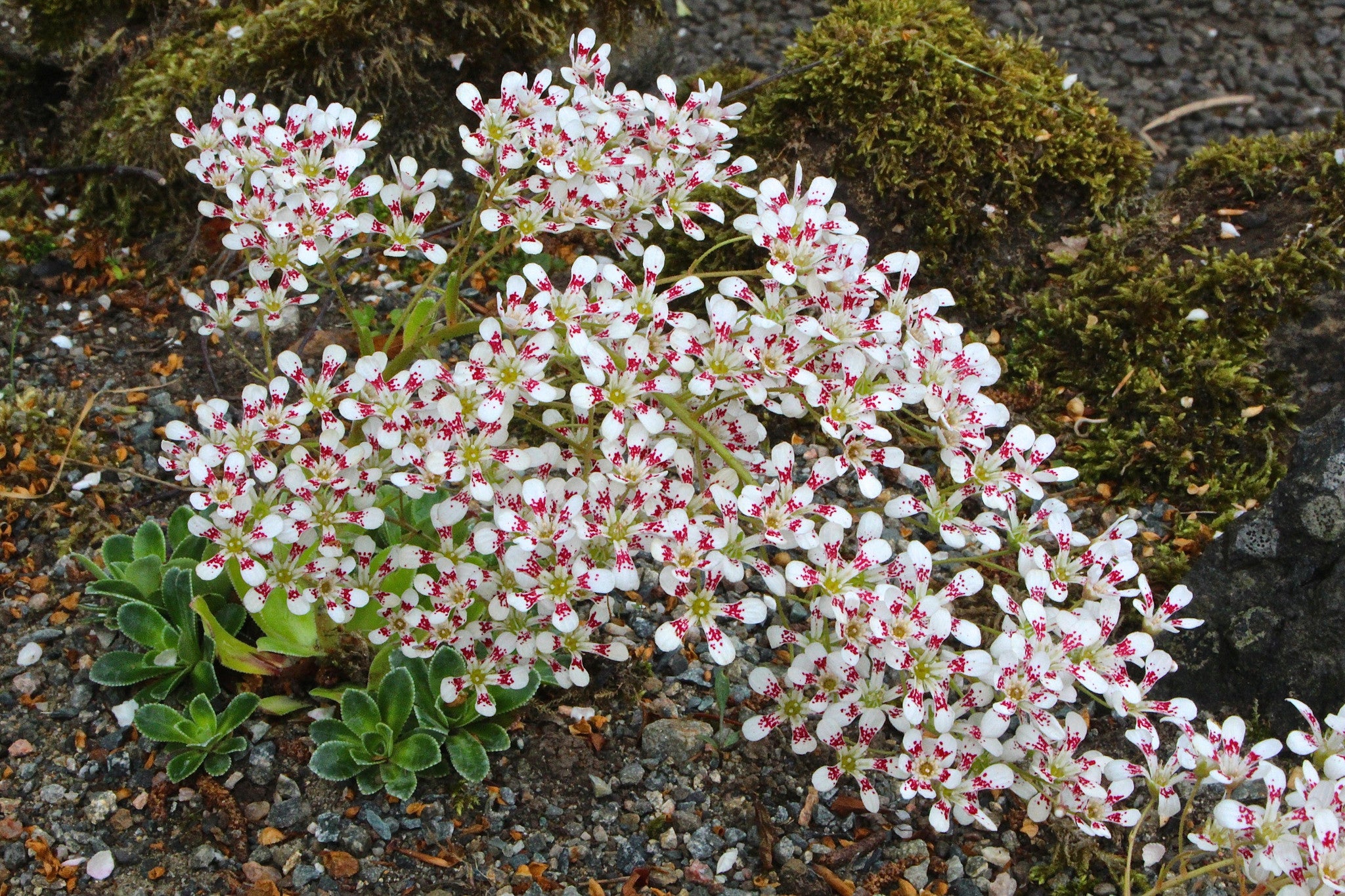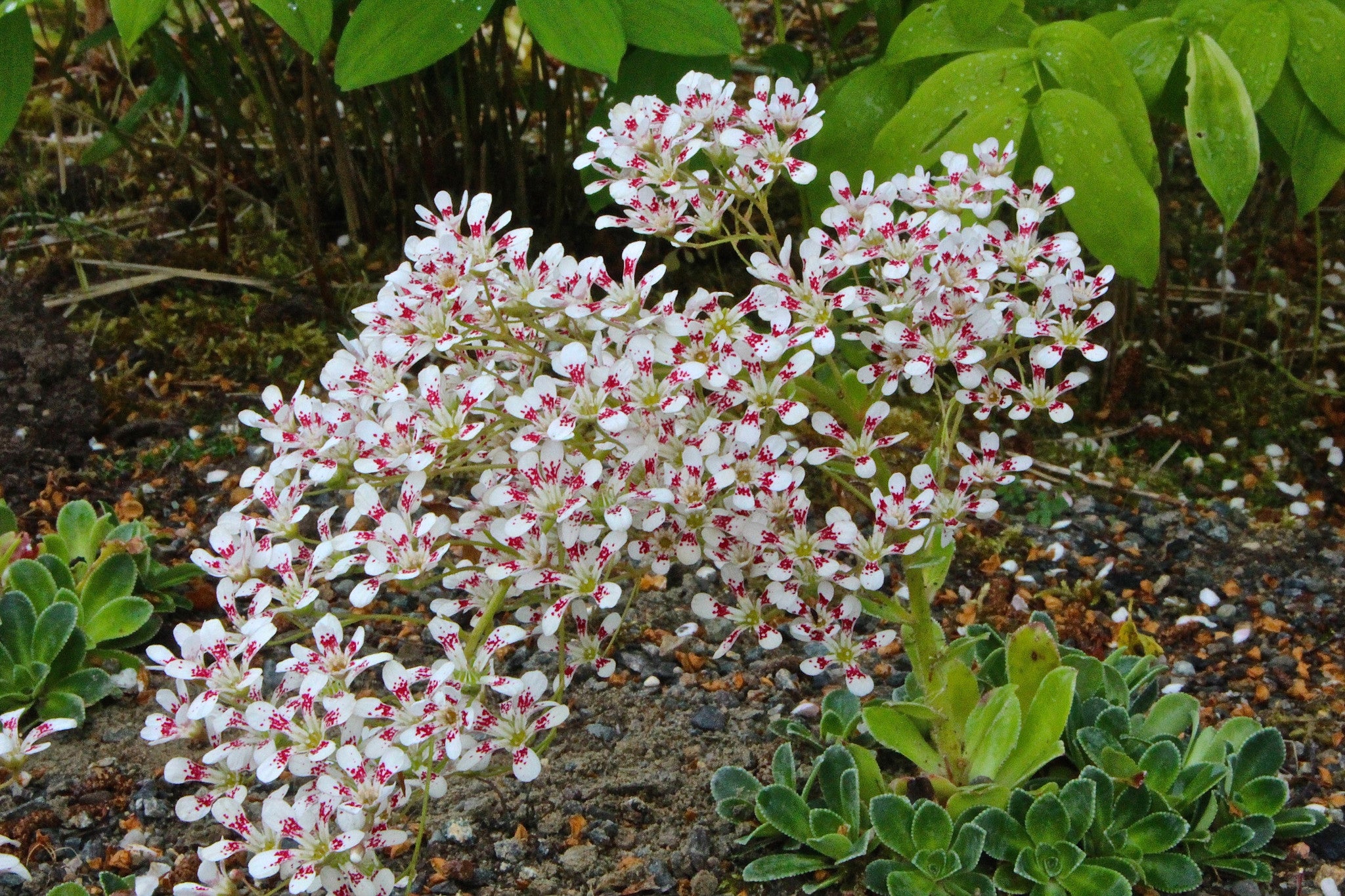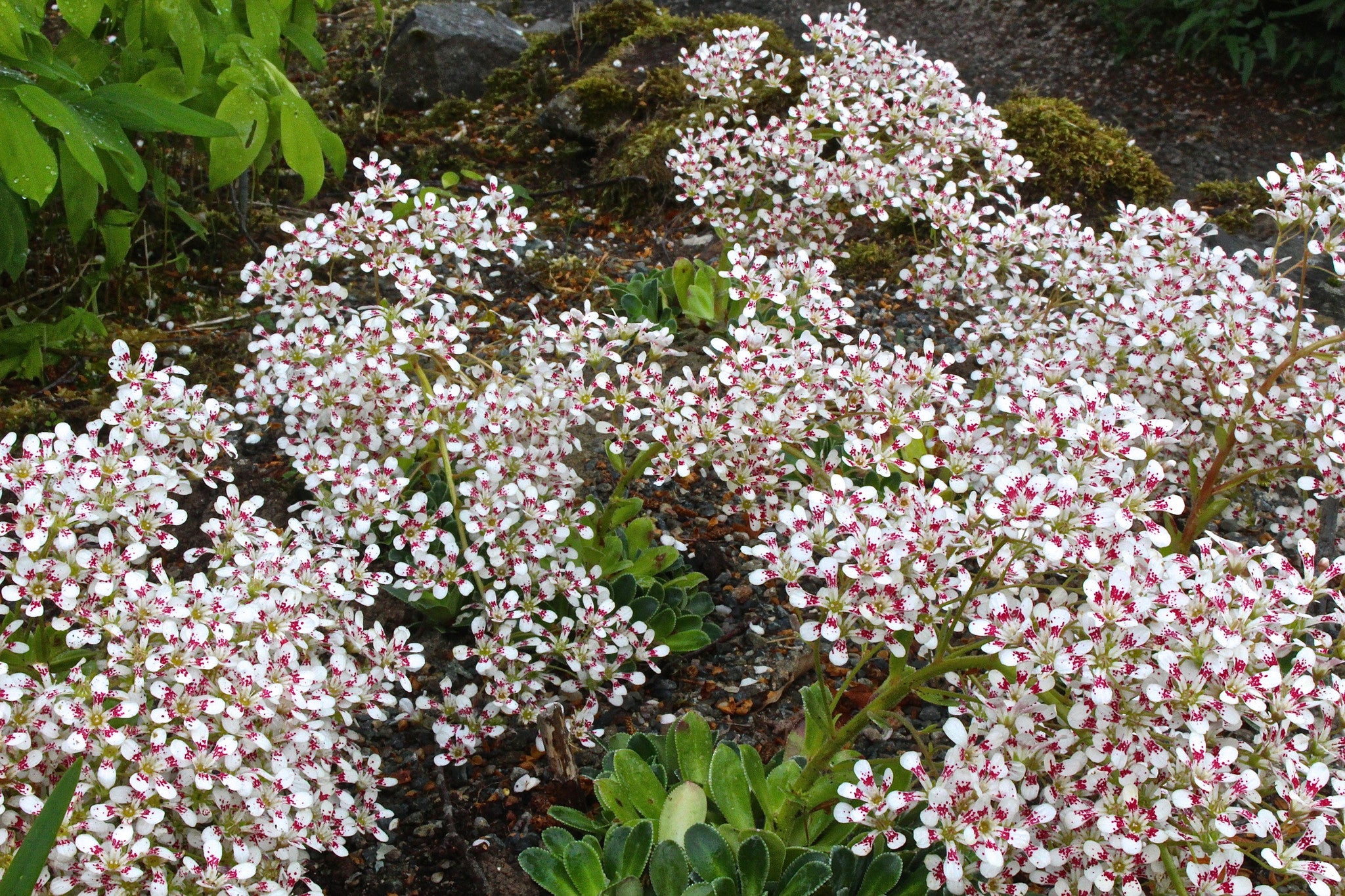Saxifraga (Southside Seedling Group) 'Southside Star' (8)
Approx. 0.5 litre pot
About this cultivar:
Saxifraga (Southside Seedling Group) 'Southside Star' (8) is a bit of a naming pain. It seems you 'could' also call it 'Slack's Ruby Southside'. Both are part of the Saxifraga Southside Seedling Group. Supposedly 'Slack's Ruby Southside' has a stripe of red halfway up white petals (as opposed to a blotch of red at the base of its white petals like 'Southside Star').
Which is a bit unfair as the strip on this one often just looks like a blotch. The photos here look like 'Slack's Ruby Southside' yet many of the plants we take from the very same plants-in-the-photo look like 'Southside Star'!!?!
AND I suspect after some propagation (by division) we'll still get a sport that has other type of blotches....(cf: Helenium 'Chelsey') then what!?!?....another cultivar? Some PBR? Maybe some day I'll figure it out...
Either way, this is a beautiful beautiful beautiful plant with red and white petals!
- Position: Full sun, partial shade
- Soil: Almost any soil
- Flowers: June, July, August
- Other features: Grows well in Ballyrobert, Suitable for Container
- Hardiness: Fully hardy, grows well in Ballyrobert
- Habit: Clump forming
- Foliage: Evergreen
- Height: 15 - 25 cm (0.5 - 0.8 ft)
- Spread: 15 - 25 cm (0.5 - 0.8 ft)
- Time to full growth: 2 to 5 years
- Plant type: Herbaceous Perennial, Alpine or Rockery
- Colour: Green, white, red
- Goes well with: -
About this genus:
Saxifraga is the largest genus in the family Saxifragaceae, commonly known as saxifrages or rockfoils. The Latin word saxifraga means literally "stone-breaker", from Latin saxum ("rock" or "stone") + frangere ("to break"). It is actually thought to indicate a medicinal use for treatment of kidney stones, rather than breaking rocks apart!
The genus Saxifrage is a very diverse genus with a wide range of semiperennial to perennial plants, covering some 480 species in total. Saxifrages can be found from the greater part of the temperate and sub-arctic zones of the northern hemispheres with some "exotic" outposts in Ethiopia, Mexico and the Arctic region. Several subalpine species from dryish spots in mountainous regions have succulent, usually nicely glaucous leaves in dense rosettes and make very dense, floriferous clusters with time. Most Saxifrage are best grown in small crevices filled with well drained soil in full sun to part shade in the rock garden. e have most of ours stuck in walls and nook and crannys. However we also have a few at the front of the border! A few of the bigger one can tolerate a lot of moisture.






